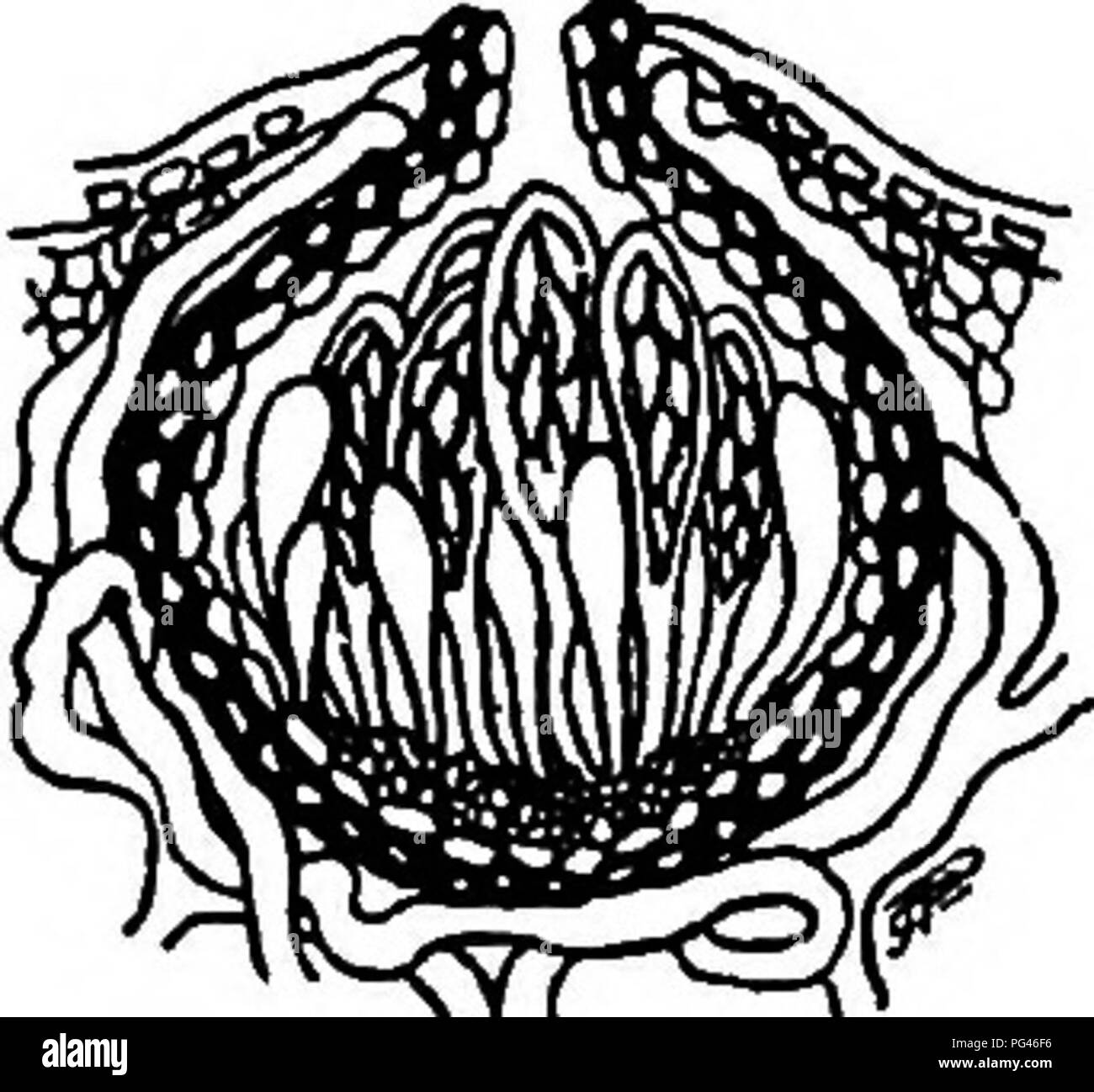. The fungi which cause plant disease . Plant diseases; Fungi. 242 THE FUNGI WHICH CAUSE PLANT DISEASE oculations under all conceivable conditions, failed utterly of posi- tive results. From the Caucasus Prillieux and Delacroix "^ have described a Guignardia causing a black rot of grapes which is regarded as distinct from the usual American form, differing both in the peri- thecial and conidial stages. This is called G. baccae (Cav.) Jacz. Its conidial form Phoma reniformis eventually covers the whole berry with pustules. Two kinds of pycnidia are described. G. vaccinii Sh."^- "

Image details
Contributor:
Central Historic Books / Alamy Stock PhotoImage ID:
PG46F6File size:
7.1 MB (295.9 KB Compressed download)Releases:
Model - no | Property - noDo I need a release?Dimensions:
1639 x 1524 px | 27.8 x 25.8 cm | 10.9 x 10.2 inches | 150dpiMore information:
This image is a public domain image, which means either that copyright has expired in the image or the copyright holder has waived their copyright. Alamy charges you a fee for access to the high resolution copy of the image.
This image could have imperfections as it’s either historical or reportage.
. The fungi which cause plant disease . Plant diseases; Fungi. 242 THE FUNGI WHICH CAUSE PLANT DISEASE oculations under all conceivable conditions, failed utterly of posi- tive results. From the Caucasus Prillieux and Delacroix "^ have described a Guignardia causing a black rot of grapes which is regarded as distinct from the usual American form, differing both in the peri- thecial and conidial stages. This is called G. baccae (Cav.) Jacz. Its conidial form Phoma reniformis eventually covers the whole berry with pustules. Two kinds of pycnidia are described. G. vaccinii Sh."^- "^ Perithecia on young fruit or flowers, sub- epidennal, globose, walls thick, carbonous; asci clavate, 60-80 m long; spores elliptic or subrhomboidal, hyaline, becoming tinted. ^, . Conidia (=Phyllosticta) borne in pycnidia Fig. 177.—A vertical sec- similar to the pcrithecia but thinner-walled, ofouiUrlS'vaccinii! 100-120 M! conidia hyaline, obovoid, 10.5- showing ascl. After ]3 5 x 5-6 ft. On Vaccinium. In the decaying berries all sporing forms of the fungus are rare though in the softened tissues fungous hyphse abound. Transferred to culture media these hyphffi grow readily and produce spores abundantly. The conidial form is conmion in artificial culture; the peri- thetical form comparatively rare. Pycnidia on leaves are sub- epidermal, usually hypophyllous, and are quite abundant. The spores at maturity issue in coils from the ostiole. The fungus was studied extensively in artificial culture by Shear, wet sterilized commeal proving a most suitable medium. Pycni- dia appeared in four to eight days after inoculation and spores were mature at twelve to eighteen days. Both pycnidia and perithecia were obtained in pure cultures. The rarity of cultures able to pro- duce perithecia is explained by Shear on the assumption "that there is some inherent potentiality in the mycelium of the fungus in certain strains, races, or generations which causes it to produce the ascogenous